Abstract
Sigma is the period of bone remodeling comprised of four phases: activation, resorption, the reverse phase and bone formation. Functional orthopedic appliances (FOA) provoke external stimuli directly at the application area, and indirectly through therapeutic posture change (TPC). The first modifications, which occur approximately 120 days after FOA use, alter the servo system through the central comparator, the occlusal comparator, the outer envelope, and the dental intercom. These changes are repercussions of the sigma period. The Objective is to demonstrate, through photos, the clinical result of the changes of the sigma period from six cases and ratify how important they are for the correct development and growth. The methodology consisted of comparison of the initial photos (intraoral – front and right/left profiles – and extraoral– front and left profile) and after 120 days of a series of six clinical cases of different malocclusions and different ages treated with FOA. After the period of 120 days, it is possible to observe clinical changes in the occlusal comparator and dental intercommunication that translate into improvement of the facial profile and lip sealing observed in the comparison of the photos.
1. Introduction
Sigma is the period of bone remodeling comprised of four phases: activation (lasting ten days where recruitment, differentiation, proliferation and cell migration occur), resorption (lasting twenty-one days), the reverse phase (five days) in which osteoblasts are activated, and bone formation, which lasts ninety days [1].
Fig. 1Flowchart of the events that comprise the sigma period
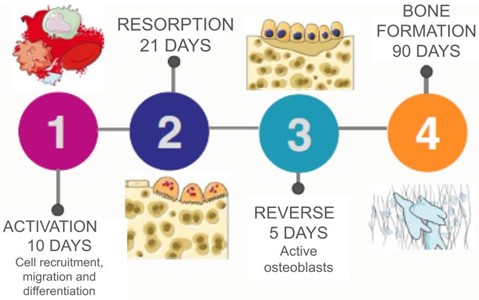
Functional orthopedic appliances (FOA) provoke external stimuli directly at the application area, and indirectly through therapeutic posture change (TPC) [2, 3].
The first modifications, which occur approximately 120 days after FOA use, alter the servo system through the central comparator, the occlusal comparator, the outer envelope, and the dental intercom. These changes are repercussions of the sigma period.
2. Objective
To demonstrate, through photos, the clinical result of the changes of the sigma period from six cases and ratify how important they are for the correct development and growth.
3. Methodology
Comparison of the initial photos (intraoral – front and right/left profiles – and extraoral – front and left profile) and after 120 days of a series of six clinical cases of different malocclusions and different ages treated with FOA.
4. Clinical cases
4.1. Case 1
M.L.P.P., female, 8 years and 3 months old with distocclusion, incisor protrusion, overbite, difficulty in lip sealing, and mouth breathing. After 120 days of treatment, there was an improvement in lip sealing, maxillomandibular discrepancy, protrusion of maxillary incisors and facial profile.
Fig. 2Case 1
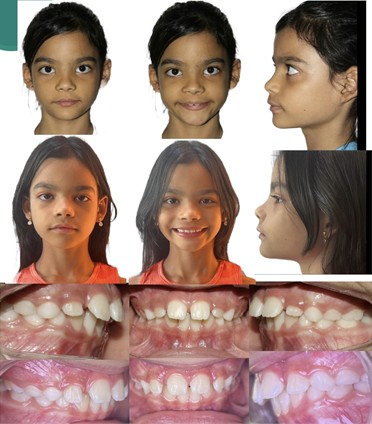
4.2. Case 2
R.R.C., male, fifteen years and seven months old, maxillomandibular atresia, lack of space, upper left side anodontics, occlusal imbalance, distocclusion and overbite. After the sigma period, better
4.3. Case 3
H.F.S., female, five years and three months old with mesial occlusion, anterior crossbite, concave profile, and atypical swallowing. After four months of functional orthopedic treatment, there was an improvement in the facial profile and uncrossing of the bite.
Fig. 3Case 2
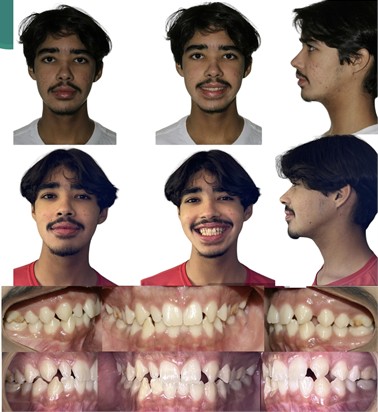
Fig. 4Case 3
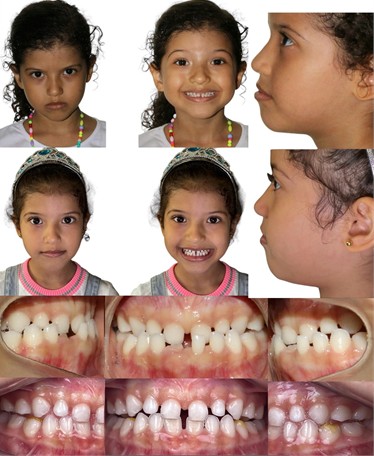
4.4. Case 4
C.E.S.D., male, five years old, mouth breather, with mesial occlusion, open bite, unilateral posterior crossbite (left side), skeletal midline deviation to the left, atypical swallowing, and difficulty in lip sealing. After treatment with FOA, there was an improvement in lip sealing and oral functions, as well as bite closure and uncrossing.
4.5. Case 5
E.H.C.O., seven years and ten months old, male, mouth breather, with mesial occlusion, bilateral anterior and posterior crossover, atypical swallowing, and maxillary atresia. After the sigma period, anterior uncrossing, posterior edge to edge, and improvement of the facial profile were observed.
Fig. 5Case 4
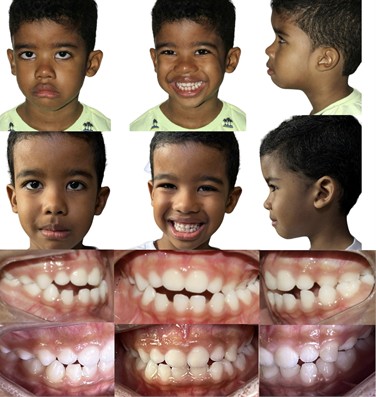
Fig. 6Case 5
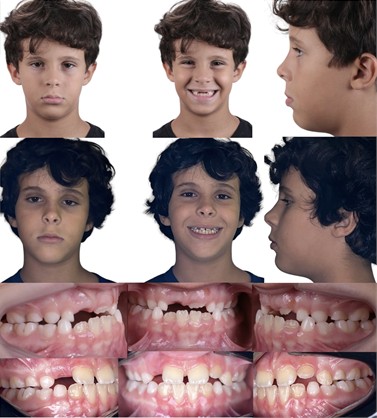
5. Final considerations
After the period of 120 days, it is possible to observe clinical changes in the occlusal comparator and dental intercommunication that translate into improvement of the facial profile and lip sealing observed in the comparison of the photos. Reports from the families show clinical improvements in oral functions such as chewing and breathing , providing conditions for the full development and growth of children treated with FOA. More clinical studies are needed to ratify the importance of speed in the treatment of malocclusions with FOA.
References
-
W. A. Simões, Functional Jaw Orthopedics. São Paulo: Arts Médicas, 2003.
-
P. Valério, Form and movement: physiological bases of functional orthopedics maxilares. Ribeirão Preto São Paulo, 2022.
-
W. A., Simões, D. Duarte, and P. Valério, Functional Jaw Orthopedics Research and clinical Excellence. São Paulo: Napoleão, 2021.
About this article
The authors have not disclosed any funding.
The datasets generated during and/or analyzed during the current study are available from the corresponding author on reasonable request.
Ana Carla Barletta Sanches: visualization, preparation, creation and/or presentation of the published work, specifically visualization/data presentation. Adrião Silveira Martins: conceptualization, ideas; formulation or evolution of overarching research goals and aims. Maria Amélia Ferreira Drummond: supervision oversight and leadership responsibility for the research activity planning and execution, including mentorship external to the core team. Anne Souza Nery: visualization, preparation, creation and/or presentation of the published work, specifically visualization/data presentation. Maria Rita Sancho Rios Xavier: methodology development or design of methodology; creation of models.
The authors declare that they have no conflict of interest.
Participants provided written informed consent prior to the research.

